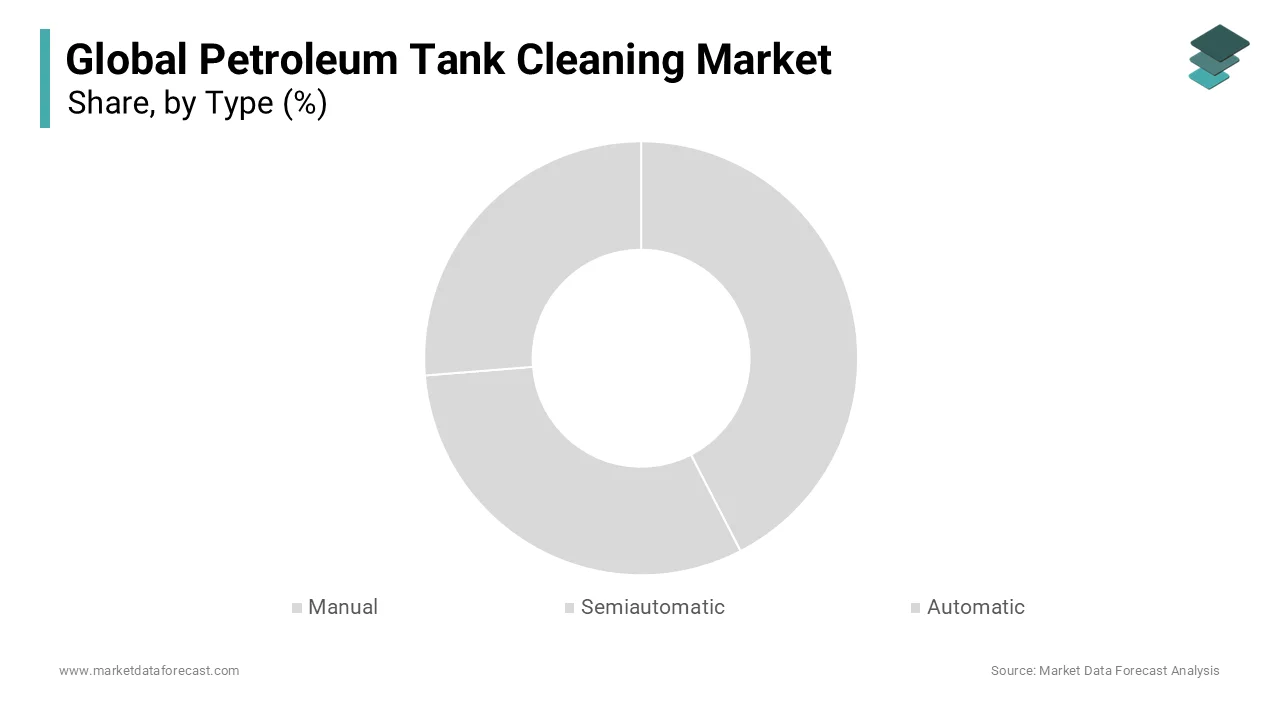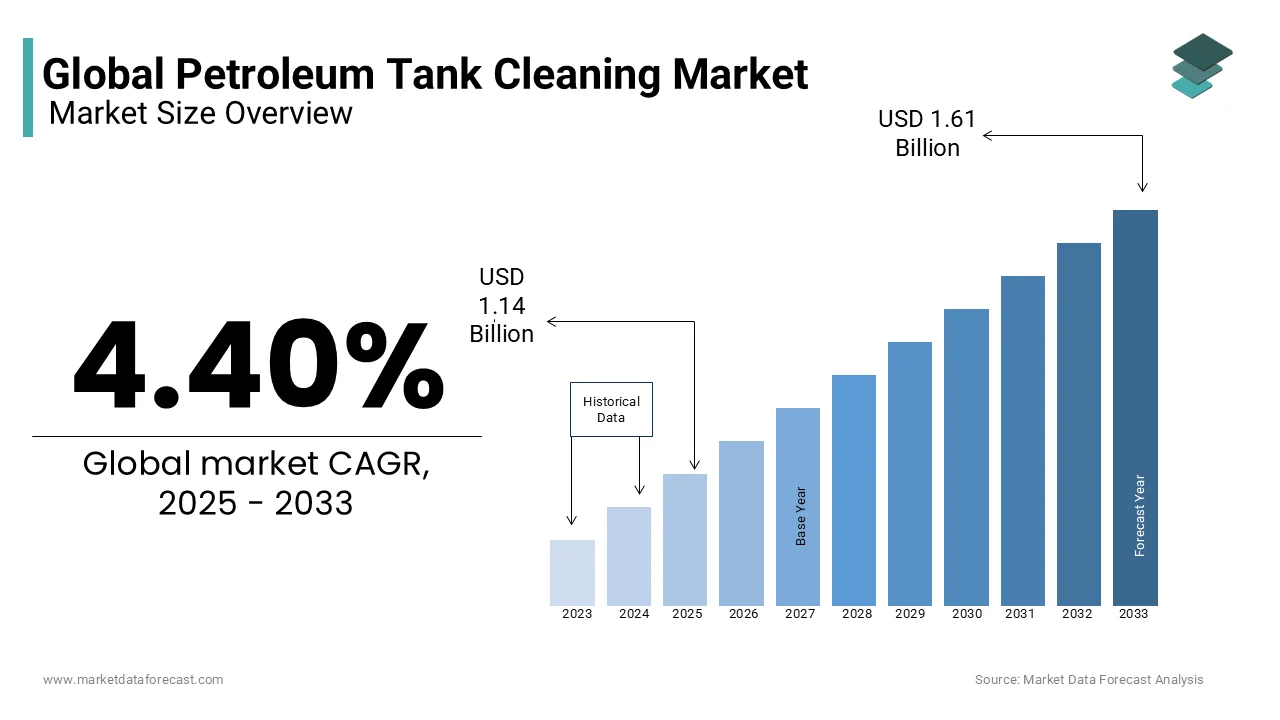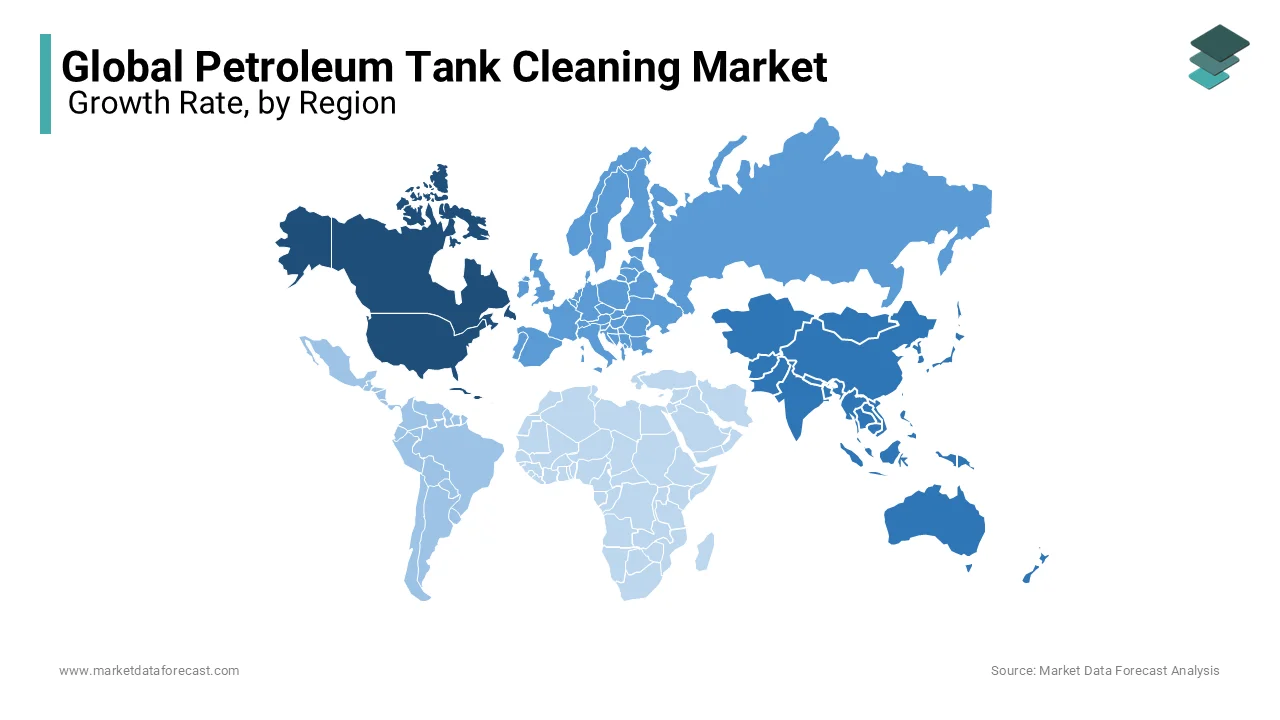Global Petroleum Tank Cleaning Market Size, Share, Trends & Growth Forecast Report By Type (Manual, Semiautomatic and Automatic), Application (Crude Oil Tank, Refinery Petroleum Product Tank, Depot & Gas Station, Petroleum Product Trading Tanks and Others) and Region (North America, Europe, Asia-Pacific, Latin America, Middle East and Africa), Industry Analysis From 2024 to 2033
Global Petroleum Tank Cleaning Market Size
The global petroleum tank cleaning market was worth US$ 1.09 billion in 2024, and it is estimated to reach a valuation of US$ 1.61 billion by 2033 from US$ 1.14 billion in 2025, expanding at an annual growth rate of (CAGR) of 4.40% between 2025 and 2033.
Tank cleaning is the process of removing hydrocarbon vapors, liquids, or residues from cargo tanks aboard a tanker. Tank cleaning may be required for one or more of the following grounds: gas-free tanks for internal inspection and repairs or before entering the dry dock. Also, sediments should be removed from top plating. The Petroleum tank cleaning market is mostly regulation-driven. Cleaning & inspection of petroleum tanks after a certain time period is mandatory in most countries and that generates regulations-driven revenue for cleaning service providers. Apart from regulations, tank farm operators always clean their tanks before filling a new product or a different quality from the last filled product. The key purpose of tank cleaning aboard oil, product, and chemical tankers is to remove the most recent cargo from the vessel’s containment systems in promptness for the next cargo.
MARKET DRIVERS
Growth in the Automotive Industry
The expansion of the automotive industry is straightly leveraging the consumption of petroleum that is ascribed to fuelling the growth rate of the petroleum tank cleaning market. It is mandatory to clean the petroleum tanks to avoid many issues like blockages and reduced storage capacity. Tanks that have not been cleaned for years may cause many issues, such as discharge line blockages, due to the formation of thick substances at the bottom of the tanks. To avoid corrosion and increase the storage capacity, it is highly important to clean the petrol tanks. This factor is attributed to leveraging the growth rate of the market. Government support to improve the road infrastructure, thereby expanding the transportation industry, is directly proportional to increasing the number of vehicles. Therefore, the rising number of vehicles on the road elevates the need for petroleum tank cleaning methods, which is likely to accelerate the growth rate of the market. The growing disposable income in urban areas and the rising popularity of luxurious cars and bikes are anticipated to elevate the growth rate of the petroleum tank cleaning market.
MARKET RESTRAINTS
The rising prominence of electric vehicles with eventually growing petrol prices is limiting the growth rate of the petroleum tank cleaning market. The unprecedented growth of the population across the world is limiting the availability of non-renewable sources. In addition to this, stringent actions by the government to combat environmental pollution due to the release of carbon emissions from fuel vehicles are solely degrading the petroleum tank cleaning market. The impact of cars and bikes that run using petrol impacts the environment in a bad way, which is raising concerns about combating all those issues. The government is greatly supporting electric vehicles to reduce all the concerns over rising environmental pollution to impede the market’s growth rate.
MARKET OPPORTUNITIES
Penetration of the most advanced technologies in launching innovative cleaning systems potentially creates huge growth opportunities for the petroleum tank cleaning market. Top companies are swiftly adopting eco-friendly cleaning techniques to fulfill demand from government authorities to reduce environmental pollution. The new technologies to clean the petroleum tanks have overcome all the challenges with the traditional setup. The growing prominence of avoiding any risk due to unclean petrol tanks is increasing with the rising awareness among customers solely to surge the growth opportunities of the petroleum tank cleaning market. In emerging countries, the expansion of crude oil refineries is posing several opportunities for companies to adopt automatic oil tank cleaning methods. This attribute is expected to bolster the growth rate of the petroleum tank cleaning market.
MARKET CHALLENGES
Difficulty in recruiting people to clean the petrol tanks using advanced technologies due to a lack of complete knowledge is degrading the growth rate of the petroleum tank cleaning market. Petroleum tanks should be cleaned by following measures where slight negligence may lead to fatal accidents. The cleaning procedure is a bit risky act due to the presence of the contaminants. The contaminants may lead to explosions when they react with the chemicals used while cleaning the tank, which is a great challenge for the market key players.
REPORT COVERAGE
|
REPORT METRIC |
DETAILS |
|
Market Size Available |
2024 to 2033 |
|
Base Year |
2024 |
|
Forecast Period |
2025 to 2033 |
|
CAGR |
4.40% |
|
Segments Covered |
By Type, Application, and Region. |
|
Various Analyses Covered |
Global, Regional, & Country Level Analysis; Segment-Level Analysis, DROC; PESTLE Analysis; Porter’s Five Forces Analysis; Competitive Landscape; Analyst Overview of Investment Opportunities |
|
Regions Covered |
North America, Europe, APAC, Latin America, Middle East & Africa |
|
Market Leaders Profiled |
CLEAN HARBORS, INC., Balmer Lawrie & Co. Ltd., TRADEBE, Enva Group, Triumvirate Environmental, STS-tank, Willacy Oil Services, Contango-OGS, Heritage Environmental Services, Regen Robotics, and Others. |
SEGMENTAL ANALYSIS
By Type Insights
The semi-automatic method had the leading share of the global market in 2024. Since the start of the oil & gas era, manual cleaning was the generally used method for tank cleaning but it was time-consuming and hazardous to human health. With technological advancement, new cleaning methods with very competitive up-time have evolved, and these technologies have continuously replaced or assisted manual labor in hazardous work areas. But with time, tank size, build type & material, and roof type had also changed as per industry & regulation requirements. And those changes forced cleaning service providers to modernize themselves and market more semiautomatic cleaning services. Within a country & region, cleaning methods depend on several markets & in-country factors such as trained manual labor availability & its cost, technology type availability, market competitiveness, governing regulations, and contamination type & other environmental considerations. Improved semiautomatic methods with few low-level manual works are the most used method of cleaning presently, and automation continues to replace more manual labor from petroleum tank cleaning jobs. Complete automatic “No man Entry” tank cleaning service providers are majorly providing services to international oil companies in major producing hubs with strict regulatory criteria like the UK, Norway & US. But presently, it has a small share of the market and is at the early growth stage of its life cycle. Automatic cleaning services are expected to replace most semiautomatic cleaning methods in the near future.

By Application Insights
Based on tank type, the global petroleum tank cleaning market is segmented into Crude Oil Tank, Refinery Petroleum Product Tank, Depot & Gas Station, Petroleum Product Trading Tanks, and Others. Crude oil tanks are the largest revenue pocket for cleaning service providers as those tanks are large and contain the major chunk of contaminations & hazardous waste of the oil & gas industry. Cleaning contracts for crude oil tanks are very costly compared to refined petroleum products tanks. Petroleum product tanks located at Refineries and Depots generally hold the same variety of products, so they do not require much cleaning other than regulation-driven mandatory cleaning. Petroleum product trading tanks hold a variety of products most of the time and require more cleaning than any other tanks. These tanks are generally mid-sized, and traders require very high up-time to lower their operation costs. The tank cleaning market for this segment is expected to rise above 6% between during the forecast period due to a rise in petroleum product trading. Other tanks, such as ISO tanks, are very small and are generally manually cleaned. These tanks are used to carry products from one location to another location and are also used to import small quantities of petroleum products.
REGIONAL ANALYSIS
North America is leading with the highest share from the past few years and is expected to continue the same flow in the coming years. Stringent actions by the government to follow the regulatory standards to ensure the safety and effectiveness of the cleaning procedures are substantially to level up the growth rate of the market in this region. Cleaning the petroleum tanks obviously increases the overall efficiency, which is attributed to boosting the market’s growth rate to the extent in North America.
Asia Pacific is deemed to hit the highest CAGR by the end of the forecast period with the increasing number of crude oil refinery companies in India and China. In India, the presence of the topmost refinery companies like Indian Oil, Reliance Industries Limited, and others are major factors in the growth rate of the market. Indian Oil is the largest contributor in the refinery companies, where it is closely providing energy access to millions of people across the nation. The rising demand for energy is attributed to leveling the need to adopt new techniques in various forms.
Europe is likely to hold a prominent growth rate throughout the forecast period. European countries are taking major steps to reduce carbon emissions by completely imposing stringent rules and regulations on all companies. End-user companies are supposed to follow respective measures to ensure product purity by lowering carbon emissions. The goal to achieve net zero emissions by 2050 is attributed to showcasing prominent growth factors for the petroleum tank cleaning market in Europe.
KEY MARKET PLAYERS
Companies playing a prominent role in the global petroleum tank cleaning market include CLEAN HARBORS, INC., Balmer Lawrie & Co. Ltd., TRADEBE, Enva Group, Triumvirate Environmental, STS-tank, Willacy Oil Services, Contango-OGS, Heritage Environmental Services, Regen Robotics, and Others.
MARKET SEGMENTATION
This research report on the global petroleum tank cleaning market has been segmented and sub-segmented based on type, application, and region.
By Type
- Manual
- Semiautomatic
- Automatic
By Application
- Crude Oil Tank
- Refinery Petroleum Product Tank
- Depot & Gas Station
- Petroleum Product Trading Tanks
- Others (ISO Tank)
By Region
- North America
- Europe
- Asia Pacific
- Latin America
- Middle East & Africa
Frequently Asked Questions
What is the size of the Petroleum Tank Cleaning market?
The Petroleum Tank cleaning market was estimated at US$1.09 billion in 2024 and is expected to reach US$1.61 billion by 2033.
What is the Petroleum Tank Cleaning market growth?
The Petroleum Tank cleaning market is expected to grow at a compound annual growth rate of 4.40%
Which are the major opportunity areas of the Petroleum Tank cleanings market?
Automatic cleaning services are expected to replace semiautomatic cleaning services in developed countries like the UK, Norway and the US in the next 5 years.
What is the competitive scenario of the top players in Petroleum Tank cleaning market?
There is an increase in new product developments, and mergers & acquisitions by key players such as CLEAN HARBORS, INC., Balmer Lawrie & Co. Ltd., and Regen Robotics
Which segment is dominating in the market based on tank type?
Crude Oil Tank segment is dominating in the Petroleum Tank cleaning market due to strict regulation followed by Tank farm owners and cleaning contracts for crude oil tanks are very costly compared to other types of tanks.
Related Reports
Access the study in MULTIPLE FORMATS
Purchase options starting from $ 2500
Didn’t find what you’re looking for?
TALK TO OUR ANALYST TEAM
Need something within your budget?
NO WORRIES! WE GOT YOU COVERED!
Call us on: +1 888 702 9696 (U.S Toll Free)
Write to us: [email protected]

